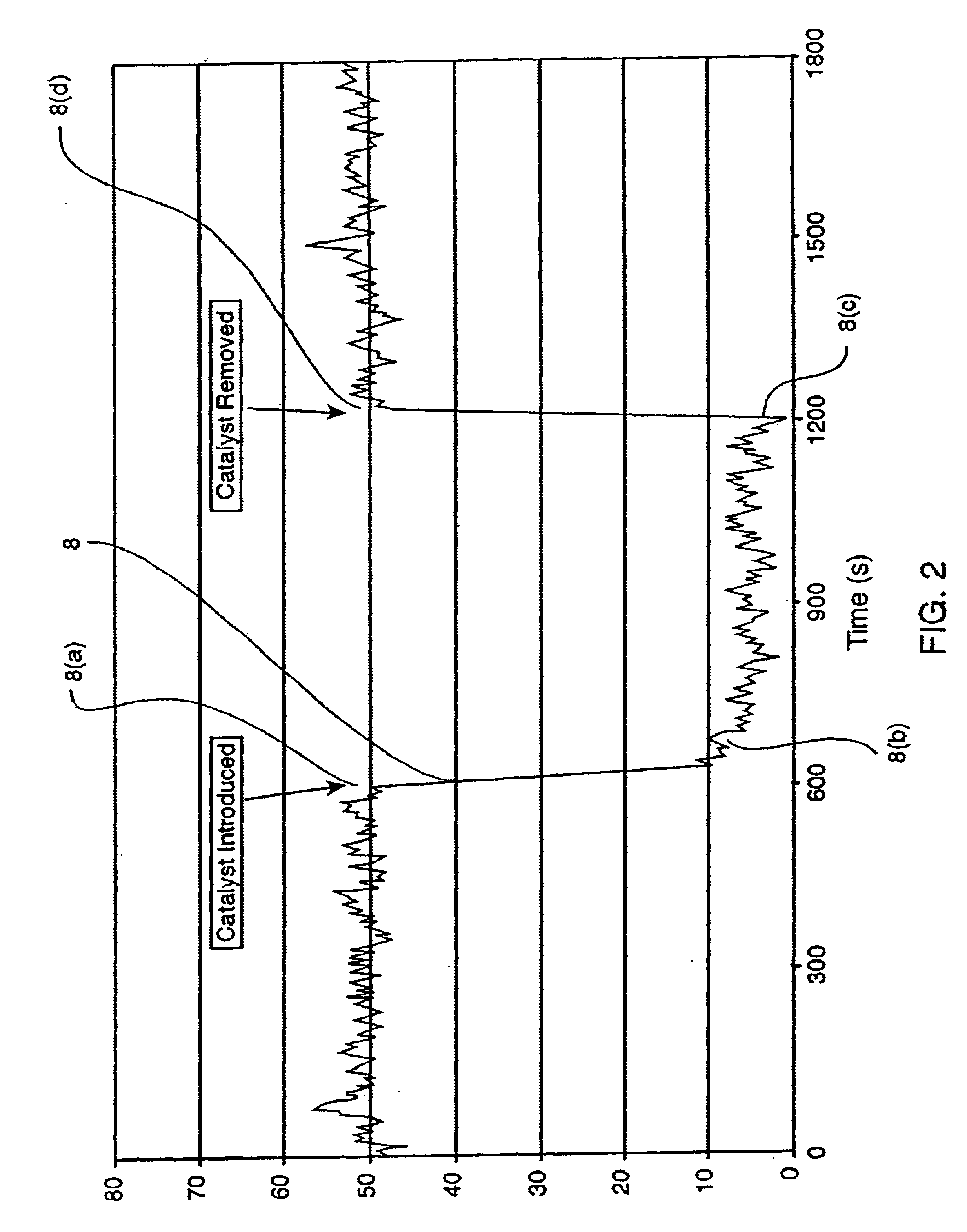Method for improved detection of carbon monoxide by infrared absorption spectroscopy
a carbon monoxide and infrared absorption technology, applied in the direction of color/spectral property measurement, instruments, material analysis, etc., can solve the problems of not addressing the compensation of interfering gases, not allowing a fixed compensation to be built into the measurement system, and carbon monoxide is also known to be a harmful by-produ
- Summary
- Abstract
- Description
- Claims
- Application Information
AI Technical Summary
Benefits of technology
Problems solved by technology
Method used
Image
Examples
Embodiment Construction
1. The Method and the Detector in General
To quantitatively measure the concentration of the species in the stream, the amount of infrared radiation absorbed by the species at the characteristic wavelength must be compared to a reference or standard.
The present invention is an improvement upon the typical zero point referencing process that a commercially available, portable, infrared spectroscopic instrument utilizes for periodic calibration.
FIGS. 1(a) and 1(b) show the present and improved configurations, respectively, for a nondispersive infrared (NDIR) spectroscopic instrument. Such instruments are commercially available, for example, the Andros Model 6600 instrument, manufactured by Andros Incorporated of Berkeley, Calif.
In the prior art configuration (FIG. 1(a)), a valve 1 switches from the sample gas flow 2 to an air reference 3 during the zeroing process for the instrument 4. The zeroing process consists of making an absorption measurement on the air reference, and arbitraril...
PUM
| Property | Measurement | Unit |
|---|---|---|
| temperature | aaaaa | aaaaa |
| temperature | aaaaa | aaaaa |
| temperatures | aaaaa | aaaaa |
Abstract
Description
Claims
Application Information
 Login to View More
Login to View More - R&D
- Intellectual Property
- Life Sciences
- Materials
- Tech Scout
- Unparalleled Data Quality
- Higher Quality Content
- 60% Fewer Hallucinations
Browse by: Latest US Patents, China's latest patents, Technical Efficacy Thesaurus, Application Domain, Technology Topic, Popular Technical Reports.
© 2025 PatSnap. All rights reserved.Legal|Privacy policy|Modern Slavery Act Transparency Statement|Sitemap|About US| Contact US: help@patsnap.com



